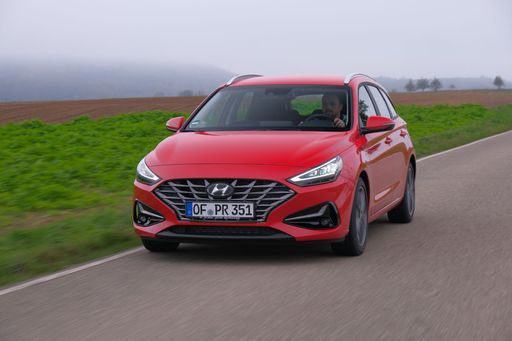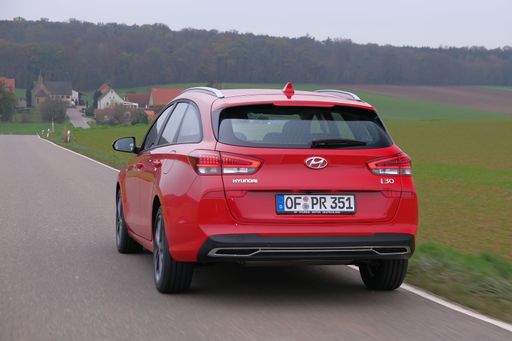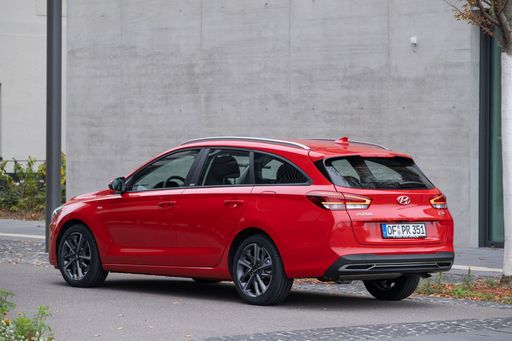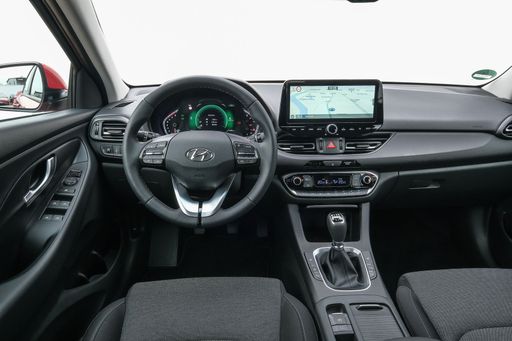Hyundai i30 Wagon vs Kia EV4 Hatchback – Which one offers the better deal?
Compare performance, boot capacity, efficiency and price at a glance.
Find out which car is the better choice for you – Hyundai i30 Wagon or Kia EV4 Hatchback?
Costs and Efficiency:
Price and efficiency are often the first things buyers look at. Here it becomes clear which model has the long-term edge – whether at the pump, the plug, or in purchase price.
Hyundai i30 Wagon has a distinct advantage in terms of price – it starts at 24800 £, while the Kia EV4 Hatchback costs 32200 £. That’s a price difference of around 7372 £.
Engine and Performance:
Power, torque and acceleration are the classic benchmarks for car enthusiasts – and here, some clear differences start to show.
When it comes to engine power, the Kia EV4 Hatchback has a evident edge – offering 204 HP compared to 140 HP. That’s roughly 64 HP more horsepower.
In acceleration from 0 to 100 km/h, the Kia EV4 Hatchback is noticeable quicker – completing the sprint in 7.40 s, while the Hyundai i30 Wagon takes 9.80 s. That’s about 2.40 s faster.
In terms of top speed, the Hyundai i30 Wagon performs somewhat better – reaching 197 km/h, while the Kia EV4 Hatchback tops out at 170 km/h. The difference is around 27 km/h.
There’s also a difference in torque: Kia EV4 Hatchback pulls to a small extent stronger with 283 Nm compared to 253 Nm. That’s about 30 Nm difference.
Space and Everyday Use:
Whether family car or daily driver – which one offers more room, flexibility and comfort?
Both vehicles offer seating for 5 people.
In curb weight, Hyundai i30 Wagon is distinct lighter – 1316 kg compared to 1811 kg. The difference is around 495 kg.
In terms of boot space, the Hyundai i30 Wagon offers noticeable more room – 602 L compared to 435 L. That’s a difference of about 167 L.
In maximum load capacity, the Hyundai i30 Wagon performs somewhat better – up to 1650 L, which is about 235 L more than the Kia EV4 Hatchback.
When it comes to payload, Hyundai i30 Wagon slightly takes the win – 524 kg compared to 459 kg. That’s a difference of about 65 kg.
Who wins the race?
The Hyundai i30 Wagon proves to be edges ahead and therefore becomes our DriveDuel Champion!
Hyundai i30 Wagon is the better all-rounder in this comparison.

Hyundai i30 Wagon
Hyundai i30 Wagon
The Hyundai i30 Wagon offers a blend of practicality and style, making it a popular choice for families and those in need of extra space. Its sleek exterior and comfortable interior provide a pleasant driving experience, while advanced safety features ensure peace of mind on the road. The i30 Wagon stands out with its impressive fuel efficiency and reliability, catering to both urban and rural lifestyles.
details @ hyundai.news
@ hyundai.news
 @ hyundai.news
@ hyundai.news
 @ hyundai.news
@ hyundai.news
 @ hyundai.news
@ hyundai.news
 @ hyundai.news
@ hyundai.news
Kia EV4 Hatchback
The Kia EV4 Hatchback paves the way for a sleek and efficient driving experience, capturing attention with its modern design and eco-friendly performance. Built with comfort and sustainability in mind, this hatchback redefines electric mobility for urban explorers and suburban commuters alike. Inside, the EV4 boasts a spacious and tech-savvy interior, offering drivers and passengers a seamless blend of innovation and practicality.
details

|
|
|
|
|
Costs and Consumption |
|
|---|---|
|
Price
24800 - 30100 £
|
Price
32200 - 42400 £
|
|
Consumption L/100km
5.7 - 6 L
|
Consumption L/100km
-
|
|
Consumption kWh/100km
-
|
Consumption kWh/100km
14.9 - 16.2 kWh
|
|
Electric Range
-
|
Electric Range
440 - 625 km
|
|
Battery Capacity
-
|
Battery Capacity
58.3 - 81.4 kWh
|
|
co2
130 - 136 g/km
|
co2
0 g/km
|
|
Fuel tank capacity
50 L
|
Fuel tank capacity
-
|
Dimensions and Body |
|
|---|---|
|
Body Type
Estate
|
Body Type
Hatchback
|
|
Seats
5
|
Seats
5
|
|
Doors
5
|
Doors
5
|
|
Curb weight
1316 - 1461 kg
|
Curb weight
1811 - 1910 kg
|
|
Trunk capacity
602 L
|
Trunk capacity
435 L
|
|
Length
4585 mm
|
Length
4430 - 4450 mm
|
|
Width
1795 mm
|
Width
1860 mm
|
|
Height
1475 mm
|
Height
1485 mm
|
|
Max trunk capacity
1650 L
|
Max trunk capacity
1415 L
|
|
Payload
439 - 524 kg
|
Payload
445 - 459 kg
|
Engine and Performance |
|
|---|---|
|
Engine Type
Petrol, Petrol MHEV
|
Engine Type
Electric
|
|
Transmission
Manuel, Automatic
|
Transmission
Automatic
|
|
Transmission Detail
Manual Gearbox, Dual-Clutch Automatic
|
Transmission Detail
Reduction Gearbox
|
|
Drive Type
Front-Wheel Drive
|
Drive Type
Front-Wheel Drive
|
|
Power HP
100 - 140 HP
|
Power HP
204 HP
|
|
Acceleration 0-100km/h
9.8 - 13.3 s
|
Acceleration 0-100km/h
7.4 - 7.8 s
|
|
Max Speed
178 - 197 km/h
|
Max Speed
170 km/h
|
|
Torque
172 - 253 Nm
|
Torque
283 Nm
|
|
Number of Cylinders
3 - 4
|
Number of Cylinders
-
|
|
Power kW
74 - 103 kW
|
Power kW
150 kW
|
|
Engine capacity
998 - 1482 cm3
|
Engine capacity
-
|
General |
|
|---|---|
|
Model Year
2024
|
Model Year
2025
|
|
CO2 Efficiency Class
D, E
|
CO2 Efficiency Class
A
|
|
Brand
Hyundai
|
Brand
Kia
|
What drivetrain options does the Hyundai i30 Wagon have?
Available configurations include Front-Wheel Drive.
The prices and data displayed are estimates based on German list prices and may vary by country. This information is not legally binding.
